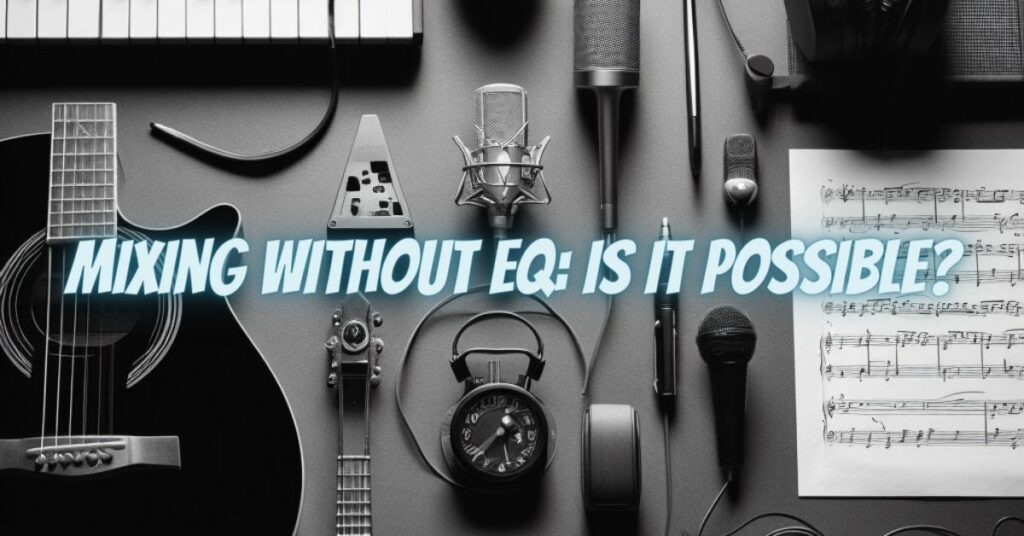Equalization, commonly referred to as EQ, is a fundamental tool in audio mixing used to shape and balance the frequencies in a sound or music production. However, the question arises: can you mix without EQ? In this article, we will explore the concept of mixing without EQ, the potential benefits of alternative approaches, and the scenarios where this might be possible.
The Role of EQ in Audio Mixing
Equalization is a versatile tool that allows audio engineers and producers to:
- Balance Frequencies: EQ can be used to adjust the balance between different frequency ranges, ensuring that no frequency overwhelms the mix.
- Enhance Clarity: By cutting or boosting specific frequencies, EQ can improve the clarity and intelligibility of individual instruments and vocals.
- Correct Issues: EQ is often employed to correct problematic frequencies in a recording, such as eliminating unwanted resonances or reducing harshness.
- Create Space: EQ can be used to create space in a mix by carving out frequencies for each instrument, preventing them from competing for the same sonic space.
- Creative Sound Design: Beyond corrective purposes, EQ can be a creative tool for altering the character and timbre of audio, resulting in unique sonic textures.
Mixing Without EQ: Is It Possible?
While EQ is a valuable and widely used tool in audio mixing, it is possible to mix without EQ in certain scenarios:
- Well-Recorded Tracks: If the source recordings are of high quality and well-balanced, there may be little need for extensive EQ adjustments. In such cases, minimal or no EQ may be required.
- Acoustic Music: In acoustic music genres, such as classical or jazz, the emphasis is often on capturing the natural sound of the instruments and performances. Minimal EQ may be preferred to maintain the authenticity of the recording.
- Intentional Sound Preservation: In some instances, the intent may be to preserve the original sound as closely as possible. For example, in certain audiophile recordings or historical reissues, engineers may choose not to use EQ to maintain the authenticity of the original recording.
- Sonic Minimalism: In experimental and avant-garde music, some producers and artists deliberately avoid EQ to embrace the raw and unaltered characteristics of the sound source.
Alternative Approaches to Mixing Without EQ
While you may choose not to use EQ extensively, alternative approaches to shaping and enhancing your mix include:
- Volume Balancing: Careful volume adjustments of individual tracks can help create balance in a mix, reducing the need for EQ.
- Mic Placement and Selection: Recording techniques, such as microphone placement and selection, can have a significant impact on the recorded sound. Proper choices can reduce the need for corrective EQ.
- Acoustic Treatment: Improving the acoustic environment and using sound absorption, diffusion, or reflection can help minimize unwanted resonances and colorations in the recording.
- Microphone Preamp and Processing: High-quality microphone preamps and outboard processing can add warmth and coloration to recordings, reducing the need for EQ adjustments.
While EQ is a powerful tool for audio mixing, it is possible to mix without extensive EQ adjustments, particularly in scenarios where high-quality recordings, minimalist sound design, or the preservation of the original sound are paramount. The choice of whether to use EQ or not ultimately depends on the specific context and objectives of the mixing process. Ultimately, mixing is an art that relies on the engineer’s judgment, experience, and creative decisions.


